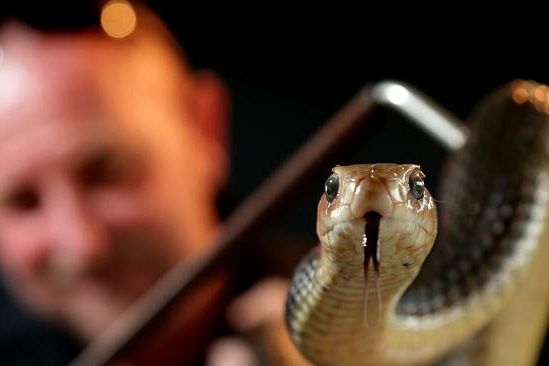
Property Management Experts
Servicing Brisbane for 10+ years with local knowledge and maximum returns!
About UsServicing Brisbane for 10+ years with local knowledge and maximum returns
About Us
Servicing Brisbane for 10+ years with local knowledge and maximum returns!
About Us
Penelope Henain's house in Gympie was safe from Queensland's flood disaster, but it has now become a refuge for a family of rats.
Ms Henain received an awful fright when she saw three giant rats, about 15 centimetres long, scurrying across her yard.
"I've never had rats here before," she said.
She suspected there could be as many as 10 burrowing in her shed next to her two-storey home.
"I know exactly where they're harbouring. You can hear the movement underneath the house," Ms Henain said.
"The birds and Kookaburras, they all sit there looking at the shed.
"We all know what's under that shed because that she’d never used to be as noisy."
Following the 2011 floods, Ipswich was forced to introduce a fox-terrier canine force to track down rat nests to curb the vermin infestation.
University of Sydney Associate Professor Mathew Crowther said we were likely to have more close encounters with rats as they seek food and shelter.
"Like people, their homes have been destroyed," he said.
"They won't necessarily migrate back unless they are going to places where people are actively trying to keep them out."
Spike in pest control call-outs
In a season that's usually quiet for rodent activity, Pest Control North Brisbane's supervisor Paul MacSporran said his company had been averaging more calls than usual — particularly in areas that have been flooded and near creeks.
"Normally, in summer, we might get one call a week for rodent activity. What we're having now is probably up to eight to 10 jobs a week," he said.
"We've been getting all these call-outs for rodent jobs where people are hearing noises and scratching in walls and scratching in people's ceilings."
Brisbane snake catcher Josh Castle said his company has also received an increase in calls since the floods, with up to 10 calls a day compared to the usual one.
From car steering wheels to mowers, Mr Castle's team has removed snakes from the most unusual places post floods.
Mr Castle said the flooding had seen an increase in wildlife activity, including among rats and snakes.
"There's going to be more activity just because [the floods] have pushed them out of where they normally are," he said.
With more than 20 years in the pest control industry, Mr MacSporran said Queensland had seen a "severe increase in pests" similar to what he saw happen after the 2011 Queensland floods.
"The last number of weeks with the floods, lots of rodents and mice and so forth [have] been coming indoors because of all the heavy rain," he said.
Cases of bacterial disease leptospirosis expected to rise
Following the 2011 floods, cases of leptospirosis jumped by 65 per cent in the weeks after, a report from the National Notifiable Diseases Surveillance System found.
The bacterial disease can be life threatening and spreads by the urine of infected animals, primarily rats and mice.
University of Queensland Associate Professor Simon Reid said it was "likely" Queensland would see a rise in cases again.
"It's very uncommon to get major flooding and not see an increase," he said.
Leptospirosis can be found in water and wet soil after floods and enters the body through open cuts and wounds.
Mr Reid said after Cyclone Winston in Fiji, the country had two separate outbreaks of leptospirosis in 2016.
"[Fiji] had a peak about several weeks after the cyclone and all the flooding, and then three months later, they had another peak," Mr Reid said.
"The first one was about the initial flooding and the clean-up.
"The second one I hypothesise was due to the delayed effect of the disruption of the rat population."
He said Australia's health system was well equipped to manage leptospirosis, but early detection is crucial.
Symptoms for leptospirosis include fever, severe headache, sore muscles, chills, vomiting and red eyes.
What to do if you have a rat problem
As we head into colder months, Mr MacSporran said he expected a busy rodent season leading up to their breeding season.
Mr MacSporran said to avoid a rat invasion, do not leave any food sources, such as food scraps and dog food, outside at night.
"Try and put as much of the food source away as possible, you will restrict the amount of activity," he said.
University of Sydney Associate Professor Peter Banks said the heavy rain event would've dented the rat population, but the survivors will be seeking new, dry homes.
"They are really adaptable, they seek places to nest and burrow," he said.
But Mr Banks said if you do have a rat problem, avoid using poison.
"There's growing concern about the effects of poisons on wildlife," he said.
"Ideally, to trap them and humanely euthanise them is the best way rather than using poisons."